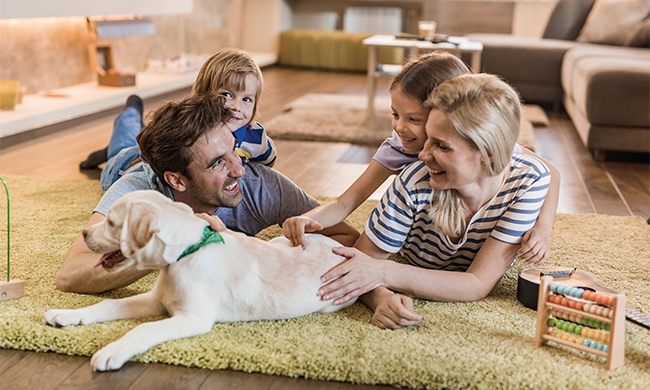
Bringing a pet home for the first time – even if you already have other pets – can be an exciting moment. However, it’s important to involve the whole family in discussing whether your family will foster or adopt, and what each family member’s responsibilities with the new pet will be. It also takes preparation and patience to ensure a smooth transition.
Regardless of the type of companion you’re welcoming into your home, adjusting to a new environment can be overwhelming and could lead to anxiety. Because dogs and cats do not communicate like humans, they often express anxiety by misbehaving, which makes it important to be willing to spend the first several days bonding with your pet and forming good habits.
Visit your local shelter or animal welfare organization to complete necessary forms and background check, and consider this advice from the experts at PetSmart to help set you and your new furry friend up for a successful homecoming.
Introduce Your Pets
When bringing a new pet into the family, set up a proper introduction with any current pets to help make the transition easier. For dogs, schedule the initial meeting at a neutral environment outside of your home. Cats typically need a more gradual introduction to get comfortable. Start by keeping your felines in separate rooms with their own litter boxes, but let them see each other periodically through a glass window to get used to sharing the space. Allowing your pets to play with each other’s toys can also create familiarity with their new housemate’s scent.
Pet-Proof Your Home
Because new pets can be especially curious and jump onto high surfaces or squeeze into small spaces, ensure clothes, cleaning supplies, electrical wires or cords and other potential hazards are out of reach. Other measures you can take to pet-proof your home include keeping toilet lids closed, covering vents and latching trash can lids. Also create a pet-friendly space with a bed or another way to divert attention, such as a scratching post for cats.
Prepare the Necessities
Decrease stress before bringing your new companion home by getting as many of the necessities ahead of time as possible. Ensuring your pet comes home to his or her own crate or bed, food and water bowls, a collar with identification, leash, food, necessary pest treatments and a variety of toys can make the adjustment to new surroundings easier.
Create a Schedule
Creating a routine for your companion’s mealtimes, bathroom breaks and playtime can help make the transition easier on both you and your pet. When building out the schedule, keep in mind that younger pets typically need to relieve themselves more often, and puppies and kittens also often require more exercise than older pets. Plan time for daily walks, solo playtime and trips to the park or backyard to play fetch.
Keep Your Pet Happy and Healthy
While a proper diet and plenty of exercise can go a long way toward keeping your pet feeling his or her best, ensure your furry friend looks the part by regularly bathing him or her and maintaining a healthy coat by brushing often with at-home grooming tools. It is also important to find a veterinarian who’s equipped to handle breed-specific needs and schedule routine checkups to stay on top of vaccines and any potential health concerns. Speak with your foster coordinator to find out about foster-specific requirements.
Find more tips for welcoming a new pet into your household at petsmart.com. (Family Features)
Susan Brewer Service First Real Estate (636)936-8600
Published on 2020-05-12 14:55:28

